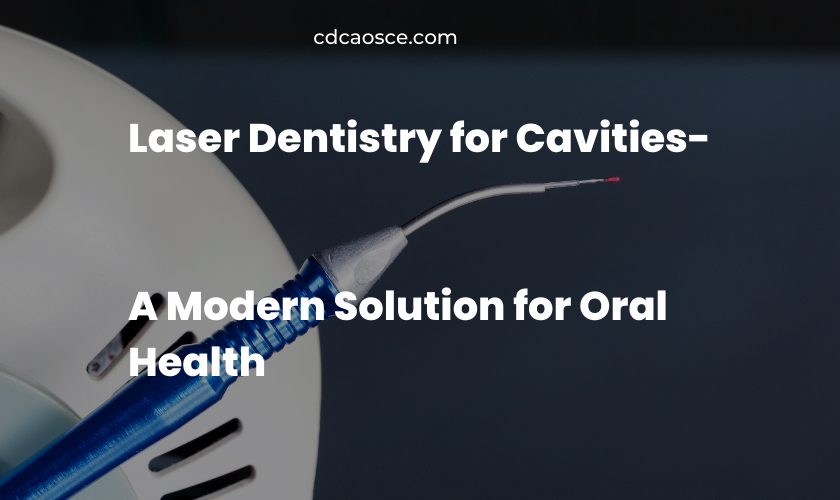Introduction
Are you tired of experiencing pain and discomfort when getting a cavity filled? Traditional methods of treating cavities often involve drills, needles, and discomfort.
Fortunately, advancements in dentistry have led to the development of laser dentistry for cavities, a modern solution for oral health.
In this article, we will explore what laser dentistry for cavities is, how it works, and its benefits compared to traditional methods.
What is Laser Dentistry for Cavities?
Lasers in the dental industry were explored in the 1960s. Since then various advancements have led to huge improvements.
Laser dentistry for cavities one modern method of treating tooth decay that uses lasers instead of traditional methods such as drills or needles.
The laser is used to remove decayed tooth material and prepare the tooth for filling. The laser can also sterilize the tooth, reducing the risk of infection.
How Does Laser Dentistry for Cavities Work?

During laser dentistry for cavities, the dentist will use a specialized laser that emits a focused beam of light energy.
This energy can be adjusted to target specific areas of the tooth, including decayed areas.
The laser will then vaporize the decayed material, leaving behind healthy tooth structure. Once the decay has been removed, the dentist will prepare the tooth for filling.
Benefits of Laser Dentistry for Cavities

There are several benefits of laser dentistry for cavities over traditional methods, including:
- Less Discomfort
One of the most significant benefits of this dentistry is that it is virtually painless. There is no heat or vibration like with traditional methods, and anesthesia is often unnecessary. This can be especially beneficial for patients with dental anxiety or phobias. - Faster Healing Time
This dentistry for cavities allows for more precise treatment. The laser can target only the decayed area, leaving healthy tooth structure intact. This precision can lead to better outcomes and less need for additional treatment in the future. - Reduced Risk of Infection
The laser used in this dentistry for cavities can sterilize the tooth, reducing the risk of infection. This can be especially important for patients with weakened immune systems.
Laser Dentistry for Cavities vs. Traditional Methods

While traditional methods of treating cavities have been used for many years, they are not without their drawbacks. Laser dentistry offers several advantages over traditional methods, including:
- Comfort and Ease
As mentioned earlier, this dentistry for cavities is virtually painless. Traditional methods often involve drilling, which can be uncomfortable for some patients. - Quick Healing
Because there is less trauma to the tooth and surrounding tissue, healing time is typically faster with laser dentistry for cavities. Traditional methods can result in bleeding and swelling, which can prolong the healing process. - More Precision
Laser dentistry allows for more precise treatment. Traditional methods can be more invasive, leading to the removal of healthy tooth structure. - Less Risky
The laser used in laser dentistry for cavities can sterilize the tooth, reducing the risk of infection. Traditional methods do not offer this benefit.
Laser Dentistry for Cavities: Frequently Asked Questions
What else can Laser dentistry be used for?
– Removing noncancerous tumors located within the oral cavity, including the gums, cheeks, palate, and lips.
– Using laser technology to address tooth sensitivity to hot and cold temperatures by sealing tubules at the root of the teeth.
– Correcting speech difficulties and restricted movement in infants and children resulting from issues with tongue or lip attachments.
-Utilizing laser light to accelerate teeth whitening procedures.
Is Laser Dentistry only for adults?
Does it help with TMJ pain as well?
If you’ve enjoyed reading this blog, check out more here!


